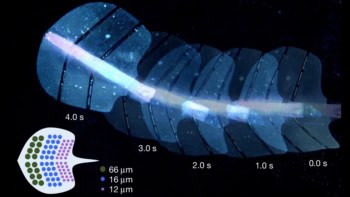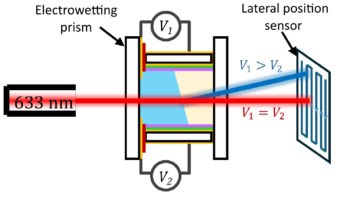
Picture this. Injured from an accident, you require brain surgery. During surgery, your doctors insert dime-sized, paper-thin devices into your brain. The devices unfurl and, almost immediately, start to collect data on your brain’s health. After surgery, they are still hard at work, keeping you safe. When the devices are no longer needed, they dissolve, leaving no trace of their presence.
A collaboration between engineers and neurosurgeons in the US, China and Korea has recently developed and characterized such a device (Adv. Mat. 10.1002/adma.201801584).
The device, called a bioresorbable brain implant, will allow doctors to monitor a patient’s vital signs and glucose and oxygen levels following surgery. After it is no longer needed, the implant will dissolve away. Unlike the permanent devices used today, surgery is not required to remove bioresorbable implants. The bioresorbable implants will also improve patient comfort and reduce complications, a desirable feature for individuals who have had life-endangering brain surgery for traumatic brain injuries or other conditions.
Form and function
The efforts of Weidong Zhou from the University of Texas at Arlington and the interdisciplinary research team required them to apply a decade’s worth of research to clinical principles in order to create the implant.
“We began exploring how to integrate optical waveguides and nanophotonic cavities for bio-implantable optical probes to make them more comfortable and introduce the ability to have the body absorb the devices completely,” says Zhou.
The bioresorbable brain implants rely on waveguides: physical structures used to guide light that are typically found in integrated optical circuits or optical communication systems. The waveguides collect precise, continuous and reliable spectroscopic data on brain health by accurately delivering and sensing light at targeted sites — sometimes as small as a single cell — in the brain.
The implants are made from biocompatible wafers of monocrystalline silicon (m-Si) filaments and a poly(lactide-co-glycolide), or PLGA, substrate. The researchers chose m-Si because it can be formed into effective, nanoscale geometries for optical sensing applications. The PLGA encapsulates the m-Si wafers and allows the researchers to tweak the amount of time it takes the implant to degrade.
Currently, the implants use near-infrared (NIR) transmission spectroscopy to measure blood oxygenation to within 4% and glucose to within 15 mg/dl. These spectroscopic measurements are vital for preventing metabolic disorders and other medical conditions in patients.
Look to the future
The future of silicon-based photonics in bioresorbable technologies and other transient implants is vast.
The neurosurgical community would also like to be able to monitor brain function, says John Rogers from Northwestern University, the lead author of the study. This will be accomplished by monitoring neurotransmitters, the body’s chemical messengers. Neurotransmitters send messages between neurons, or from neurons to muscles, to affect behaviour and control the activity of various organs, which directly impacts blood pressure, heart rate and other functions.
The researchers also hope to make the bioresorbable brain implants even smaller to minimize invasiveness and reduce the risk of damage to brain tissue. Testing advanced versions of the implant in animals will allow them to make final refinements to the devices before commercialization.
Zhou recently received a National Science Foundation Partnerships for Innovation grant to help bring the implant to market. The researchers estimate that the bioresorbable brain implant will cost around $6 per foot to produce.
This brain implant is only one biodegradable device on the horizon. Rogers’ lab has developed a number of biodegradable devices to address unmet medical needs, from diagnosis to therapy and monitoring.
“We have […] published several examples of full systems with clinically relevant modes of operation,” says Rogers. “We have demonstrated various devices in animal models and we have plans for human trials — but none of these devices is yet commercialized.”



